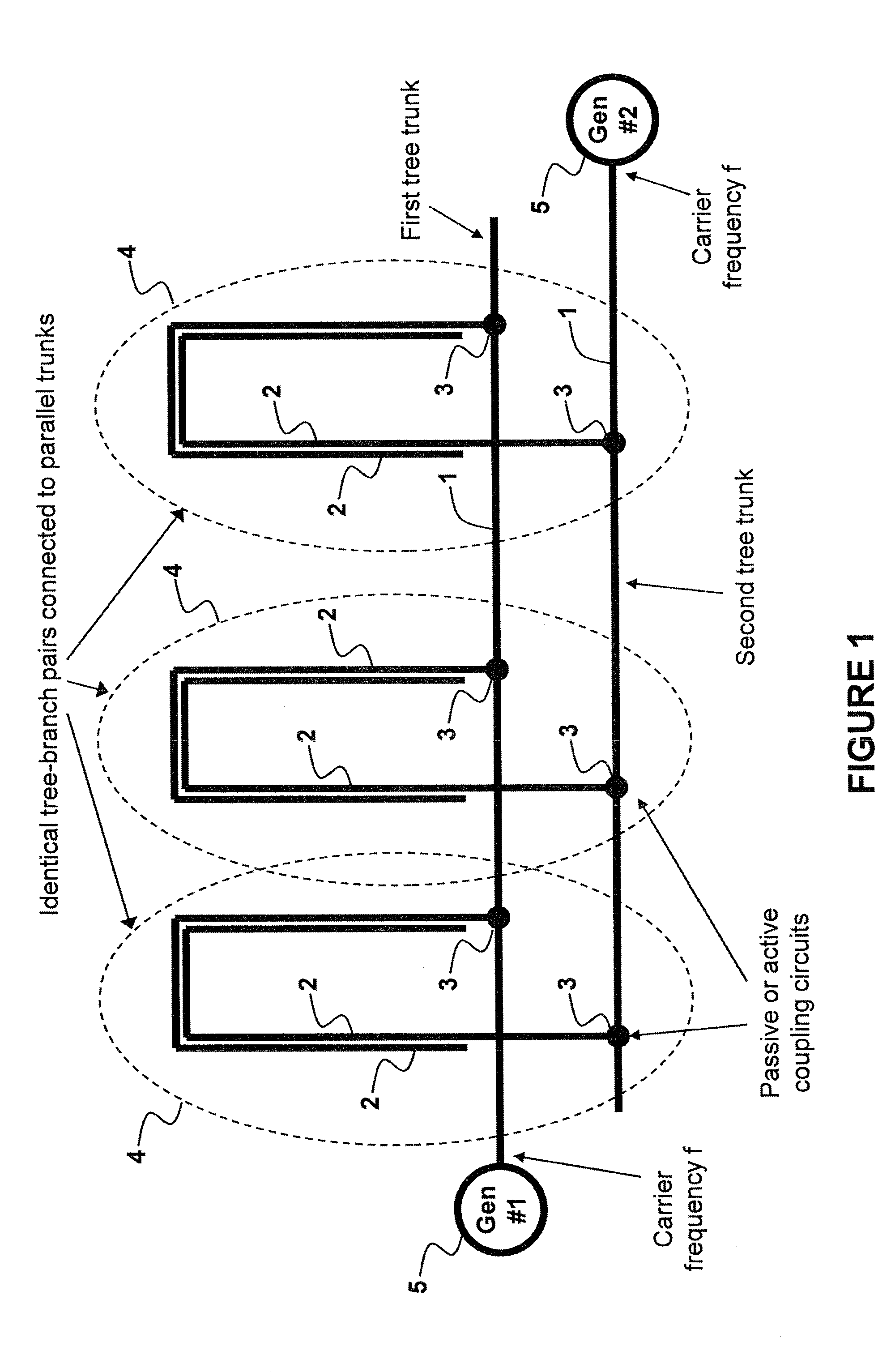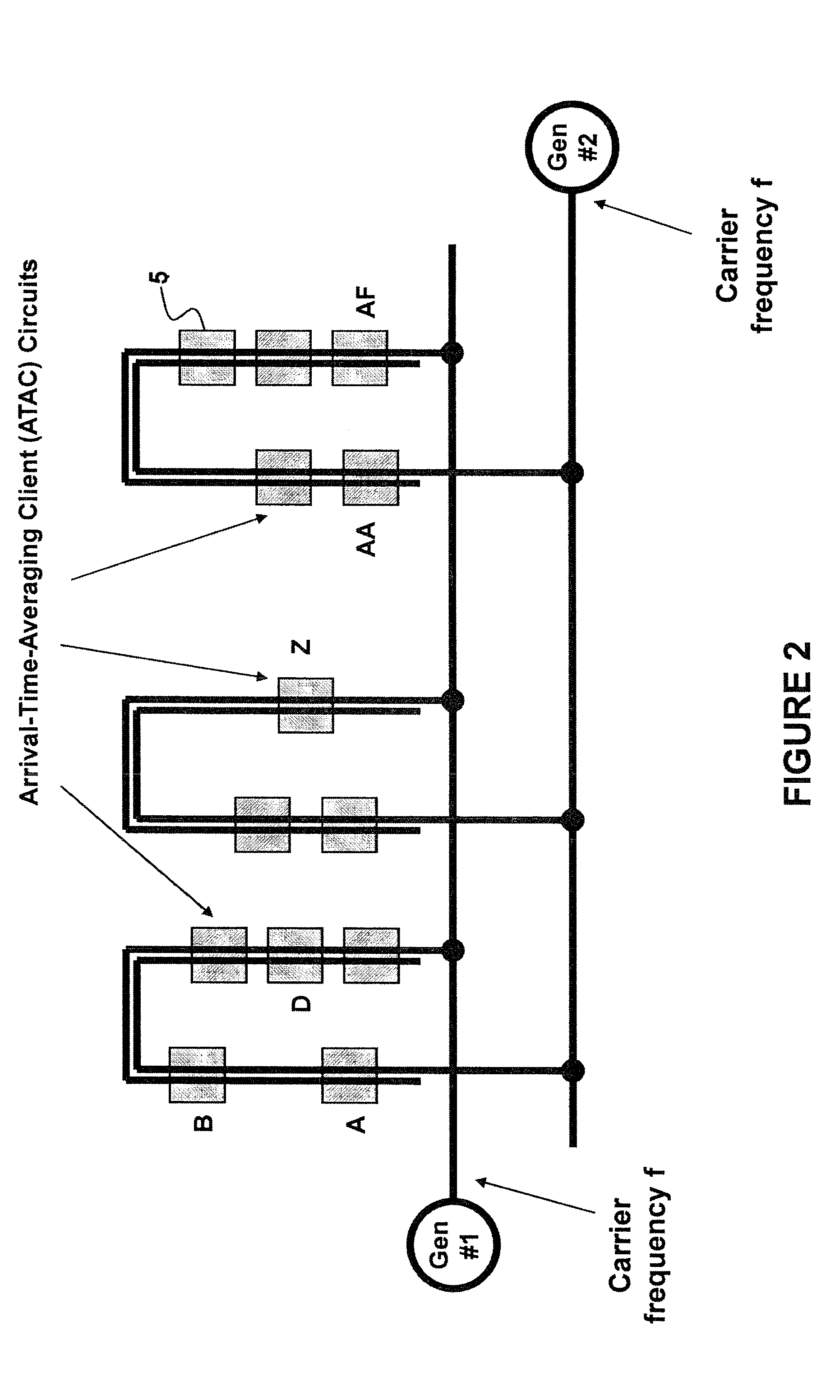Method and system for multi-point signal generation with phase synchronized local carriers
a local carrier and multi-point signal technology, applied in the direction of generating/distributing signals, digital transmission, pulse automatic control, etc., can solve the problems of insufficient electrically small miniaturized systems such as fully integrated circuits, the design of distribution networks providing accurate synchronization may become extremely difficult, and the practical limitations are well documented
- Summary
- Abstract
- Description
- Claims
- Application Information
AI Technical Summary
Benefits of technology
Problems solved by technology
Method used
Image
Examples
Embodiment Construction
A Single-Frequency System Using Two-Level Trees
[0083]Embodiments of the present invention include the generation of at least two modulated signals at many points in space such that their carriers have the same frequency and are in precise phase relationship to each other.
[0084]FIG. 1 depicts a schematic diagram of two independent tree networks, each consisting of a tree trunk 1 and tree branches 2. The tree trunk and the tree branches are properly terminated transmission lines (termination circuits are not shown in FIG. 1 for simplicity), such as electrical microstrip lines, optical wave-guides, or sound propagating guides. The difference between the trunk 1 and the branches 2 is not in substance but rather in name, based on the relative position of the transmission lines (TL) with respect to the tree network input port. The trunk 1 is defined as the transmission line connected directly to the input port. The branches 2 are coupled to the trunk 1 through passive or active circuits 3...
PUM
 Login to View More
Login to View More Abstract
Description
Claims
Application Information
 Login to View More
Login to View More - R&D
- Intellectual Property
- Life Sciences
- Materials
- Tech Scout
- Unparalleled Data Quality
- Higher Quality Content
- 60% Fewer Hallucinations
Browse by: Latest US Patents, China's latest patents, Technical Efficacy Thesaurus, Application Domain, Technology Topic, Popular Technical Reports.
© 2025 PatSnap. All rights reserved.Legal|Privacy policy|Modern Slavery Act Transparency Statement|Sitemap|About US| Contact US: help@patsnap.com



